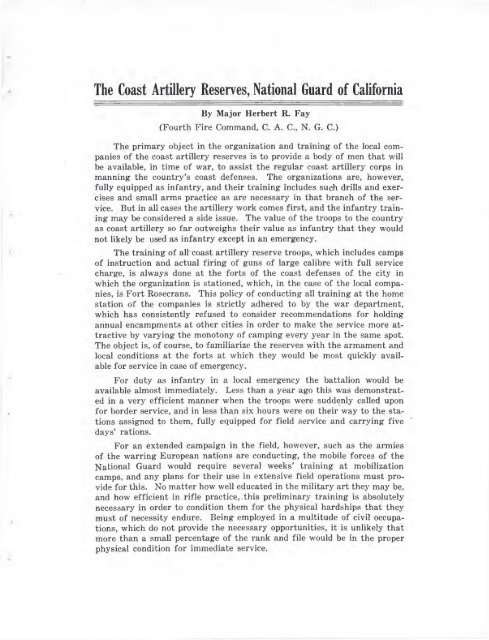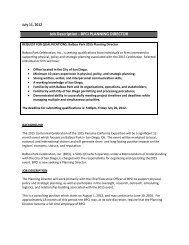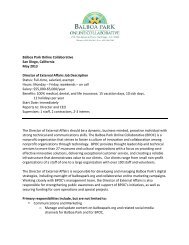Army and Navy Review 1915 Panama-California Edition - Balboa Park
Army and Navy Review 1915 Panama-California Edition - Balboa Park
Army and Navy Review 1915 Panama-California Edition - Balboa Park
You also want an ePaper? Increase the reach of your titles
YUMPU automatically turns print PDFs into web optimized ePapers that Google loves.
The Coast Artillery Reserves, National Guard of <strong>California</strong><br />
By Major Herbert R. Fay<br />
(Fourth Fire Comm<strong>and</strong>, C. A. C., N. G. C.)<br />
The primary object in the organization <strong>and</strong> training of the local companies<br />
of the coast artillery reserves is to provide a body of men that will<br />
be available, in time of war, to assist the regular coast artillery corps in<br />
manning the country’s coast defenses. The organizations are, however,<br />
fully equipped as infantry, <strong>and</strong> their training includes such drills <strong>and</strong> exercises<br />
<strong>and</strong> small arms practice as are necessary in that branch of the service.<br />
But in all cases the artillery work comes first, <strong>and</strong> the infantry training<br />
may be considered a side issue. The value of the troops to the country<br />
as coast artillery so far outweighs their value as infantry that they would<br />
not likely be used as infantry except in an emergency.<br />
The training of all coast artillery reserve troops, which includes camps<br />
of instruction <strong>and</strong> actual firing of guns of large calibre with full service<br />
charge, is always done at the forts of the coast defenses of the city in<br />
which the organization is stationed, which, in the case of the local companies,<br />
is Fort Rosecrans. This policy of conducting all training at the home<br />
station of the companies is strictly adhered to by the war department,<br />
which has consistently refused to consider recommendations for holding<br />
annual encampments at other cities in order to make the service more attractive<br />
by varying the monotony of camping every year in the same spot.<br />
The object is, of course, to familiarize the reserves with the armament <strong>and</strong><br />
local conditions at the forts at which they would be most quickly available<br />
for service in case of emergency.<br />
For duty as infantry in a local emergency the battalion would be<br />
available almost immediately. Less than a year ago this was demonstrated<br />
in a very efficient manner when the troops were suddenly called upon<br />
for border service, <strong>and</strong> in less than six hours were on their way to the stations<br />
assigned to them, fully equipped for field service <strong>and</strong> carrying five<br />
days’ rations.<br />
For an extended campaign in the field, however, such as the armies<br />
of the warring European nations are conducting, the mobile forces of the<br />
National Guard would require several weeks’ training at mobilization<br />
camps, <strong>and</strong> any plans for their use in extensive field operations must provide<br />
for this. No matter how well educated in the military art they may be,<br />
<strong>and</strong> how efficient in rifle practice, this preliminary training is absolutely<br />
necessary in order to condition them for the physical hardships that they<br />
must of necessity endure. Being employed in a multitude of civil occupations,<br />
which do not provide the necessary opportunities, it is unlikely that<br />
more than a small percentage of the rank <strong>and</strong> file would be in the proper<br />
physical condition for immediate service.







